Results
-
 £57.50
£57.50The Saints' Hallelujah (Young Edition)
One of the all-time favorite production numbers for the Canadian Brass is this clever arrangement that combines The Hallelujah Chorus with When the Saints Go Marching In. Johnnie has created an easier version of this classicallowing it to be performed by younger groups. What a great idea! (Grade 21/2)
Estimated dispatch 7-14 working days
-
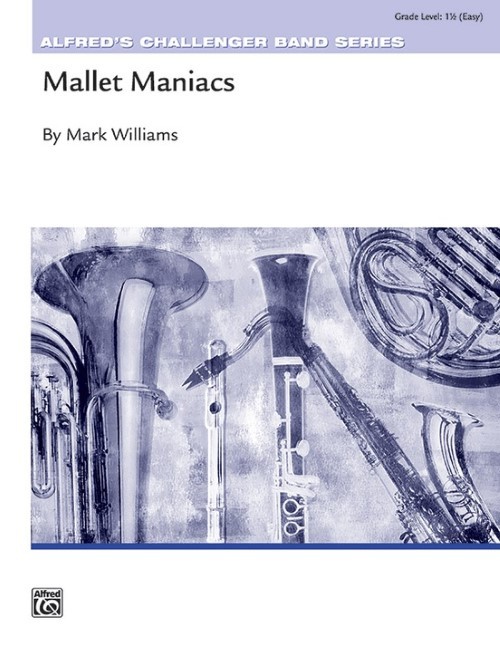 £49.95
£49.95Mallet Maniacs (Mallet Percussion Feature with Concert Band - Score and Parts) - Williams, Mark
Show off your mallet percussionists in this clever section feature. Use as many players as possible on bells, xylophone, vibes and marimba for this joyful tour-de-force. The parts are easy enough that you can even recruit some "non-mallet" percussionists to join in. What a cool way to promote mallet percussion Don't miss this one! Duration: 1.45
Estimated dispatch 7-14 working days
-
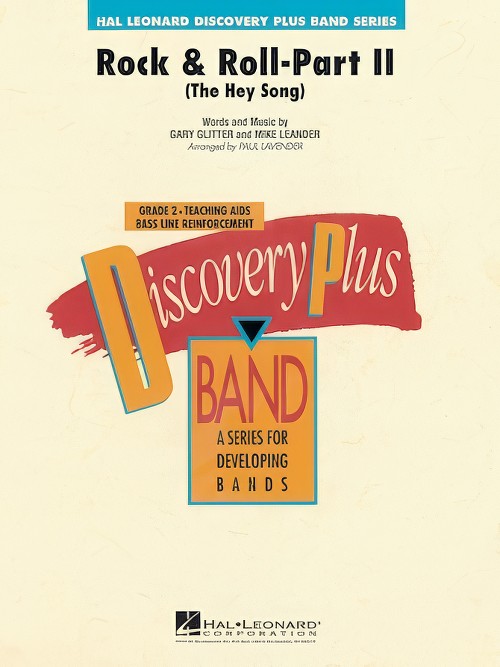 £47.50
£47.50Rock and Roll - Part II (The Hey Song) (Concert Band - Score and Parts) - Glitter & Leander - Lavender, Paul
One of the ultimate stadium rock tunes ever comes to the concert stage in this great-sounding arrangement by Paul Lavender. What a motivator for young bands!
Estimated dispatch 7-14 working days
-
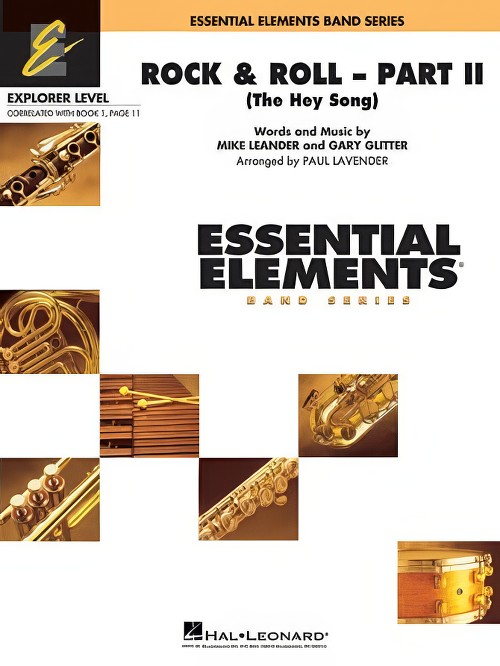 £38.50
£38.50Rock & Roll - Part II (The Hey Song) (Concert Band - Score and Parts) - Glitter & Leander - Lavender, Paul
Paul has skilfully arranged this stadium anthem so that even beginning bands can "rock on". What a great motivational tool for your young players!
Estimated dispatch 7-14 working days
-
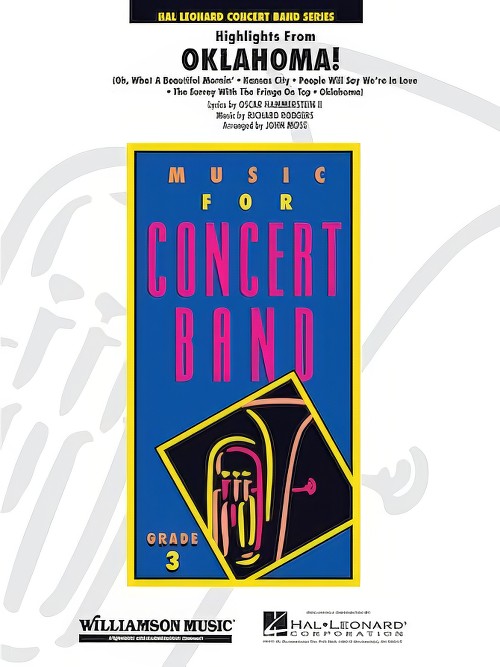 £64.99
£64.99Oklahoma!, Highlights from (Concert Band - Score and Parts) - Hammerstein & Rodgers - Moss, John
Oklahoma!' remains as one of the most enduring of Broadway shows and many of its songs are regarded as timeless treasures. John Moss pays tribute to writers Rodgers and Hammerstein in his new young band medley that features: Oh, What A Beautiful Mornin'. Kansas City, People Will Say We're In Love. The Surrey With The Fringe On Top, and Oklahoma!
Estimated dispatch 7-14 working days
-
 £45.54
£45.54Matrix March (Concert Band - Score and Parts)
What a great way to teach "march style" to your young players! The limited technical demands and ranges allow focus on spacing and stylistic issues which are so important to march performances. Yet, it sounds "mature" and more difficult than it really is.
Estimated dispatch 7-14 working days
-
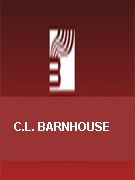 £50.00
£50.00Slippery Elm Rag (Concert Band - Score and Parts) - Woods, Clarence - Rhoads, William
What a delightful way to feature your entire flute section. The lively ragtime rhythms and easy accompaniment are sure to make this an interesting and fun addition to your program.
Estimated dispatch 7-14 working days
-
 £48.70
£48.70Spirituals (Flexible Ensemble - Score and Parts) - Wood, Stephen D.
4 Part Flexible Ensemble and PercussionContains:O Lord What A Morning (All Night, All Day)Amazing GraceGome And Go With Me (Oh, Freedom)
Estimated dispatch 7-14 working days
-
 £65.00
£65.00WHEN THE STARS BEGAN TO FALL (Concert Band) - Allen, Fred J.
(My Lord What a Mourning) American Grade 2
Estimated dispatch 7-14 working days
-
 £274.99
£274.99Symphony No. 2: States Of Mind, Opus 87 - Teo Aparicio-Barberán
I- Logos (reason)II- Pathos (emotion)III- Ethos (credibility)The ancient Greeks believed that music shaped the character of man. In Egyptian temples, music was an essential part of the magical rites to alter the course of nature or to treat illness.And today we know that sound can actually alter matter. The secret of music lies in harmony and mathematics, as many great musicians and experts have always known.One of the most important qualities of music is that it enables the listener to focushis attention inwards instead of on what is around him. It is indisputable that music can inspire emotion. Music leads us into a universe of emotions that are difficult to put into words. In short, music reaches into corners of our soul and thoughtsthat words cannot reach and makes it possible to more clearly describe these different States of mind.The composer of this symphony also believes that each "musical argument" must be constructed so that it will induce the desired reaction in thelistener.Music: more than wordsIn recent times, most orchestral symphonies have been based on a story, a text or something similar so that their composition must be structured accordingly.The intention of this work by Teo Aparicio-Barbern is quitedifferent. The composer describes the three elements of the argument as the only formal structure of the work. Since certain philosophers in world history were able to subdivide grammatical argument, why shouldnt that also be possible for the musicalargument?Since ancient times the power of the spoken word has captivated mankind. How can an argument move people and mobilise the masses? Where does the power of words come from today? The answer lays not so much in what people say but in how theysay it.Rhetoric is one of the oldest humanist disciplines in Western civilisation. Aristotle, in the 4th century BC, called it the art of persuasion. Indeed, the terms rhetoric and persuasion are mutually interchangeable.More than 2000 years agoAristotle structured his rhetoric according to the following three elements: the logos, the pathos and the ethos.Logos (words, reason) is the reasoning that gives freedom to the structure of the text by expressing what one wishes to say usingspecialist terms. With logos we create arguments to receive public approval and to defend our ideas.Pathos, the second element, refers to the effective use of public psychology. Pathos can be considered as the capacity to induce the desired emotionalresponse in the public, by creating an emotional connection with the public so that they accept our message.The third element, ethos (credibility), refers to the character of the speaker and is perhaps the most important of the three elements.Aristotle based his concept of ethos upon his belief that truth and justice will always have the upper hand over anger. He believed that what was true and good was easier to prove and was more persuasive.This second orchestral symphony from thecomposer from Enguera follows these three parameters of the argument according to Aristotle. Each movement tries to summon a different state of mind in the listener so that the message itself can be better understood and appreciated. Apart from thesethree general concepts the music is only structured, as Claude Debussy would say, in a "formative way".The first movement, logos, is based on a scherzo melody that undergoes various changes in rhythm and harmony. The arguments are presented by meansof conventional techniques of composition. The second movement, pathos, is characterised by suggestions of sound. It is subdivided into two large parts. The first part is based on a five seven sequence with five sounds that are repeated in differentenvironments, structures and dynamics. The second part, which is largely tonal, brings out more directly the emotional overtones that each argument must have. The third movement, ethos, is a faithful rendition of the composers personality. In thislast part, clear rhythmic sequences stand out, there are large dynamic contrasts and lots of tone variation. In addition, and this is quite in keeping with the composers earlier work, the harmony in States of Mind is handled in a manner that is bothoriginal and efficient, as a result of which Aparicio-Barberns message is well understood by the listener.This second symphony by Teo Aparicio-Barbern is devoted to "my dear Henrie Adams, a guiding light in this eternally dark musical world. Thankyou for everything."
Estimated dispatch 7-14 working days
